How to Create Striking Contrasts with Chiaroscuro
Have you ever gazed at a painting and felt an overwhelming sense of drama, as if the artwork was alive with emotion? That captivating effect often comes from a technique known as chiaroscuro. This powerful method of using light and shadow not only adds depth but also creates a dynamic interplay that can transform a simple scene into something truly breathtaking. In this article, we will explore the essence of chiaroscuro, its historical roots, and practical applications, all while providing you with tips to master this technique in your own artwork.
At its core, chiaroscuro refers to the dramatic contrast between light and dark in visual art. Originating from the Italian words "chiaro" (light) and "scuro" (dark), this technique plays a crucial role in enhancing the three-dimensionality of subjects, making them appear more lifelike. Imagine walking into a dimly lit room where a single beam of light illuminates a figure, casting deep shadows around it. This not only draws your eye to the subject but also evokes a sense of mystery and intrigue. Chiaroscuro is not just about the stark contrasts; it’s about the emotional resonance that these contrasts can create.
The roots of chiaroscuro can be traced back to the Renaissance, a period marked by a renewed interest in classical art and humanism. Artists began to explore the effects of light on form, leading to an evolution in the way subjects were depicted. This was a time when creativity flourished, and the use of chiaroscuro became a hallmark of many masterpieces. Artists like Leonardo da Vinci and Michelangelo laid the groundwork, but it was the likes of Caravaggio and Rembrandt who truly pushed the boundaries of this technique, each adding their unique flair and interpretation.
When discussing chiaroscuro, it’s impossible to overlook the contributions of Caravaggio and Rembrandt. These two masters not only popularized the technique but also showcased its versatility in conveying different emotional states. Caravaggio's approach was characterized by dramatic lighting and intense contrasts, often illuminating his subjects against dark backgrounds, creating a sense of urgency and tension. In contrast, Rembrandt’s style was more subtle, utilizing gentle gradations of light and shadow to add depth and complexity to his portraits and landscapes. Both artists demonstrate that chiaroscuro is not just a technique but a powerful storytelling tool.
One cannot discuss Caravaggio without mentioning his revolutionary use of light. His paintings, such as "The Calling of Saint Matthew," exemplify how stark contrasts can evoke powerful emotions. In this piece, the light falls dramatically on Matthew, highlighting his surprise and the divine moment of calling. The surrounding shadows amplify the sense of drama, pulling the viewer into the scene. Caravaggio's method of using light not only focused on the subjects but also created an atmosphere that enveloped the viewer, making them feel part of the action.
On the other hand, Rembrandt's approach to chiaroscuro was all about subtlety. His works, like "The Night Watch," showcase his mastery in creating depth through soft transitions between light and shadow. Rather than relying on stark contrasts, Rembrandt employed a more nuanced technique, allowing the viewer to explore the intricacies of his subjects. This method not only added volume to his figures but also invited the audience to engage with the emotional undercurrents of the scene. It’s this delicate balance that sets Rembrandt apart, demonstrating that chiaroscuro can be both dramatic and gentle.
Fast forward to today, and chiaroscuro continues to inspire contemporary artists across various mediums. Whether in painting, photography, or digital art, the principles of light and shadow remain relevant. Modern creators have adapted chiaroscuro to fit their unique styles, often using it to evoke specific moods or highlight particular aspects of their subject matter. For instance, in photography, manipulating lighting can create stunning contrasts that enhance the emotional impact of an image. This adaptability ensures that chiaroscuro remains a vital part of the artistic toolkit.
So, how can you master this captivating technique? Understanding chiaroscuro involves a mix of practice and theory. Here are some practical tips to help you get started:
- Experiment with Lighting: Try different lighting setups to see how they affect the mood of your artwork. Natural light, artificial light, and even colored gels can yield fascinating results.
- Practice Sketching: Regularly sketching with a focus on light and shadow can help you internalize the principles of chiaroscuro.
- Study the Masters: Analyze works by Caravaggio, Rembrandt, and other artists to understand how they used light and shadow to convey emotion.
Effective lighting is crucial for mastering chiaroscuro. Different lighting setups can dramatically change the outcome of your artwork. For example, using a single light source can create strong contrasts, while multiple light sources can soften shadows and create more complex effects. Experimenting with angles and distances will help you discover how to manipulate light to achieve the desired impact in your work.
Sketching is an essential practice for grasping the nuances of chiaroscuro. Start by setting up simple still life arrangements with a single light source, and focus on how light interacts with the objects. This exercise will help you refine your skills in identifying light sources, shadows, and highlights, building your confidence in applying chiaroscuro in more complex compositions.
What is chiaroscuro?
Chiaroscuro is a technique used in art that emphasizes the contrast between light and shadow to create a sense of depth and volume.
Who are the key artists associated with chiaroscuro?
Notable artists include Caravaggio and Rembrandt, both of whom utilized chiaroscuro to convey emotion and drama in their works.
How can I practice chiaroscuro?
Start by experimenting with lighting setups and sketching objects under different light conditions to understand how shadows and highlights interact.
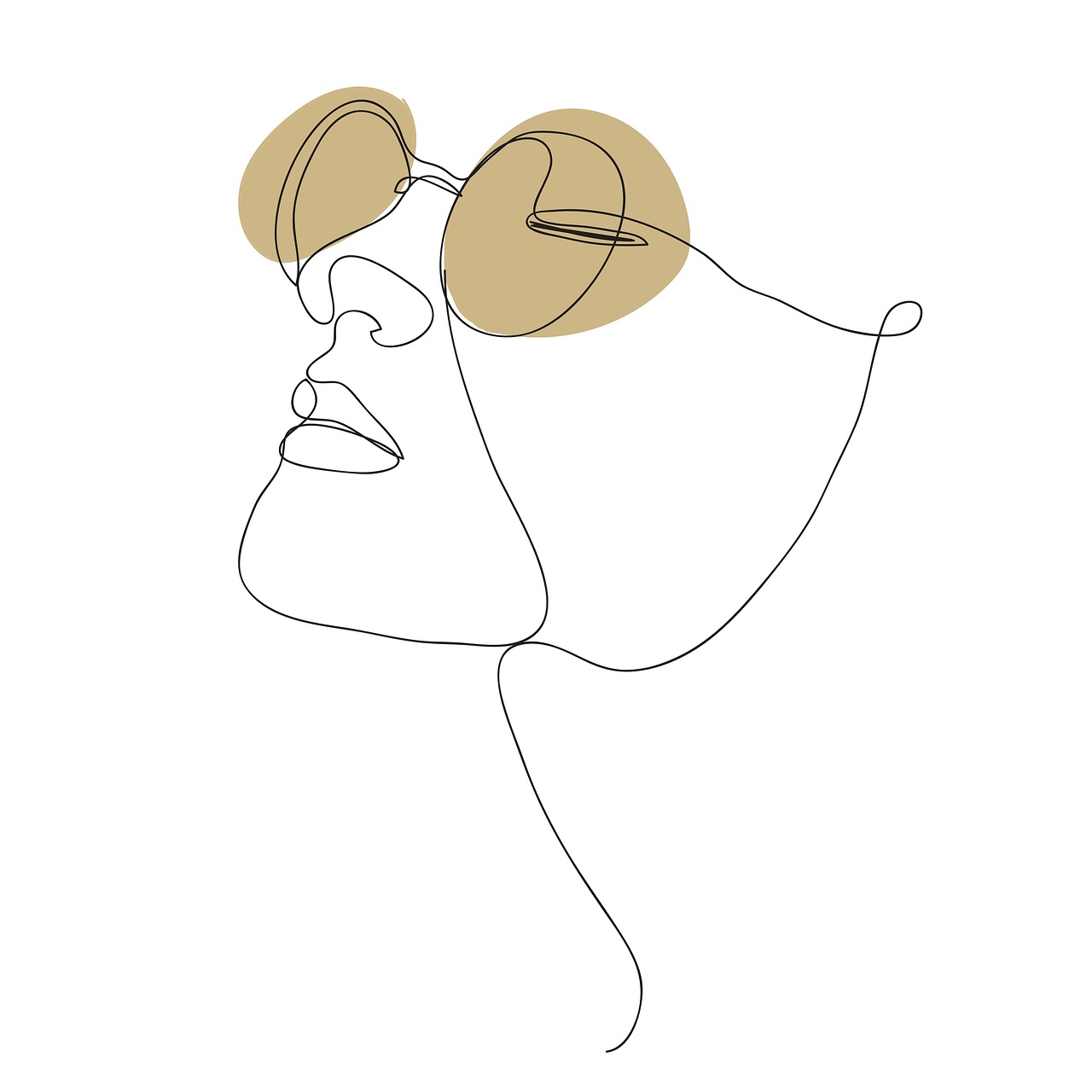
Understanding Chiaroscuro
Chiaroscuro, a term derived from the Italian words "chiaro" meaning light and "scuro" meaning dark, refers to the dramatic interplay of light and shadow in art. This technique is not just about creating a stark contrast between the two; it’s about enhancing the depth and dimension of a composition. Imagine walking into a dimly lit room where a single beam of light illuminates a sculpture, casting deep shadows that bring out the intricate details. That captivating effect is what artists strive to achieve through chiaroscuro.
The origins of chiaroscuro can be traced back to the Renaissance, where artists began to explore the emotional power of light and shadow. It’s fascinating to think about how light can be used to direct a viewer's attention, evoke feelings, and even tell a story. By manipulating light, artists are able to create an atmosphere that can be either dramatic or subtle, depending on their intent. This technique not only enhances the visual appeal but also adds a layer of narrative depth to the artwork.
In practical terms, chiaroscuro works by establishing a strong contrast between the illuminated areas and the shadows. This contrast can be achieved through various means, such as the use of different colors, textures, and forms. For instance, a bright, vibrant color can be placed next to a deep, muted tone to create a striking visual effect. Additionally, the positioning of light sources plays a crucial role in shaping how shadows are cast, ultimately affecting the overall composition.
Understanding chiaroscuro is essential for any artist looking to master the art of visual storytelling. It’s about more than just aesthetics; it’s a technique that can evoke emotion and mood. Whether you’re painting a portrait, capturing a moment in photography, or designing a digital piece, the principles of chiaroscuro can transform your work from flat and lifeless to dynamic and engaging. So, the next time you pick up a brush or a camera, think about how you can use light and shadow to create a powerful impact in your art.
- What is the main purpose of chiaroscuro in art? Chiaroscuro is primarily used to create depth and dimension, enhancing the emotional impact of the artwork.
- Can chiaroscuro be used in digital art? Absolutely! Many digital artists use chiaroscuro principles to add drama and interest to their compositions.
- How can I practice chiaroscuro techniques? Start with simple sketches focusing on light and shadow, gradually incorporating more complex subjects as you gain confidence.

Historical Background
Chiaroscuro, a term derived from the Italian words for "light" (chiaro) and "dark" (scuro), has a rich and fascinating history that traces back to the Renaissance period. This technique revolutionized the way artists approached light and shadow, allowing them to create more realistic and emotionally resonant compositions. Before the Renaissance, art was often flat and lacked the depth that chiaroscuro introduced. The emergence of this technique marked a significant shift in artistic expression, as it enabled artists to convey a sense of three-dimensionality and drama in their works.
During the Renaissance, artists began to explore the effects of light on form, leading to a deeper understanding of how shadows could create volume and depth. This was a time when the study of anatomy and perspective was becoming more sophisticated, and artists like Leonardo da Vinci and Michelangelo laid the groundwork for future explorations of chiaroscuro. However, it was the Baroque period that truly saw the technique flourish, with artists pushing the boundaries of light manipulation to evoke emotion and drama.
Among the notable figures of this era, Caravaggio stands out as a master of chiaroscuro. His bold contrasts and dramatic use of light not only captured the viewer's attention but also conveyed intense narratives. Similarly, Rembrandt brought a different approach to the technique, characterized by subtle gradations of light and shadow that lent a sense of intimacy and introspection to his portraits. These artists, along with others such as Georges de La Tour and Artemisia Gentileschi, played pivotal roles in defining chiaroscuro, each bringing their unique flair to the technique.
The influence of chiaroscuro extended beyond painting; it also permeated other art forms, including sculpture and printmaking. In sculpture, artists learned to manipulate light to highlight textures and forms, creating dynamic interactions between light and shadow. In printmaking, chiaroscuro woodcuts emerged, showcasing the interplay of light and dark in a new medium. This adaptability of the technique is a testament to its significance in the art world.
In modern times, chiaroscuro continues to inspire artists across various mediums. Whether in photography, digital art, or traditional painting, the principles of light and shadow remain integral to creating compelling visual narratives. The historical journey of chiaroscuro not only reflects the evolution of artistic techniques but also highlights the ongoing dialogue between light and darkness in the visual arts.
- What is the main purpose of chiaroscuro in art? Chiaroscuro is primarily used to create depth, volume, and drama in visual compositions, enhancing the emotional impact of the artwork.
- Which artists are known for their use of chiaroscuro? Notable artists include Caravaggio, Rembrandt, Leonardo da Vinci, and Artemisia Gentileschi, each contributing uniquely to the technique.
- How can I practice chiaroscuro techniques? Artists can practice chiaroscuro by sketching from life, experimenting with different lighting setups, and focusing on the interplay of light and shadow in their work.

Key Artists and Their Techniques
When we dive into the world of chiaroscuro, we can't overlook the **pioneers** who shaped its narrative. These artists didn’t just play with light and shadow; they wielded it like a sword, creating **visual symphonies** that resonate even today. Among the most notable figures are Caravaggio and Rembrandt, each with their own distinctive approaches that not only defined their styles but also influenced generations of artists who followed.
Caravaggio, often heralded as the master of dramatic lighting, was known for his **stark contrasts**. He had an almost theatrical approach to his compositions, where the interplay of light and shadow created a sense of **urgency and emotion**. One of his most famous works, "The Calling of Saint Matthew," showcases this technique beautifully. The light streams in from an unseen source, illuminating Matthew and casting the other figures into shadow. This not only draws the viewer's eye but also heightens the **dramatic tension** of the moment. Caravaggio's works often evoke a sense of immediacy, pulling the viewer into the scene as if they are witnessing the event firsthand.
On the other hand, we have Rembrandt, whose style embodies a more **subtle and sophisticated** use of chiaroscuro. Unlike Caravaggio's stark contrasts, Rembrandt’s technique focused on **gradations of light**, creating a soft, almost ethereal quality in his portraits. His painting "The Night Watch" is a prime example, where light gently caresses the faces of the subjects, revealing their expressions and adding depth to the narrative. Rembrandt's ability to convey emotion through light was unparalleled, allowing viewers to feel the **intimacy** of the moment. His mastery of chiaroscuro can be likened to a musician skillfully playing a melody, where each note (or in this case, each shade) contributes to the overall harmony of the piece.
Both Caravaggio and Rembrandt used chiaroscuro to tell stories—stories that resonate through time. Their techniques can serve as a foundation for modern artists looking to explore this powerful method. Understanding their approaches can provide invaluable insights into how to manipulate light and shadow in your own work.
In addition to these masters, other artists like Giorgione and Leonardo da Vinci also played significant roles in the evolution of chiaroscuro. Giorgione's use of atmospheric effects and soft transitions between light and dark created a sense of **mystery**, while da Vinci's studies on light and shadow laid the groundwork for future explorations in realism. Each of these artists contributed unique techniques that expanded the possibilities of chiaroscuro, making it an essential tool in the artist's toolkit.
To summarize, chiaroscuro is not just a technique; it's a language of its own. Through the **innovative approaches** of artists like Caravaggio and Rembrandt, we see how light and shadow can evoke emotion, create depth, and tell compelling stories. As you embark on your own artistic journey, remember to study these masters, for their techniques can illuminate your path in the world of chiaroscuro.
- What is chiaroscuro? Chiaroscuro is a technique in art that uses strong contrasts between light and dark to create a sense of volume and three-dimensionality.
- Who are the key artists associated with chiaroscuro? Notable artists include Caravaggio and Rembrandt, who both used light and shadow in distinctive ways to enhance their compositions.
- How can I practice chiaroscuro in my artwork? Start by studying light in your environment, sketching with a focus on light and shadow, and experimenting with different lighting setups in your compositions.
- Can chiaroscuro be applied in digital art? Absolutely! Many digital artists use chiaroscuro techniques to add depth and drama to their work, just like traditional artists.
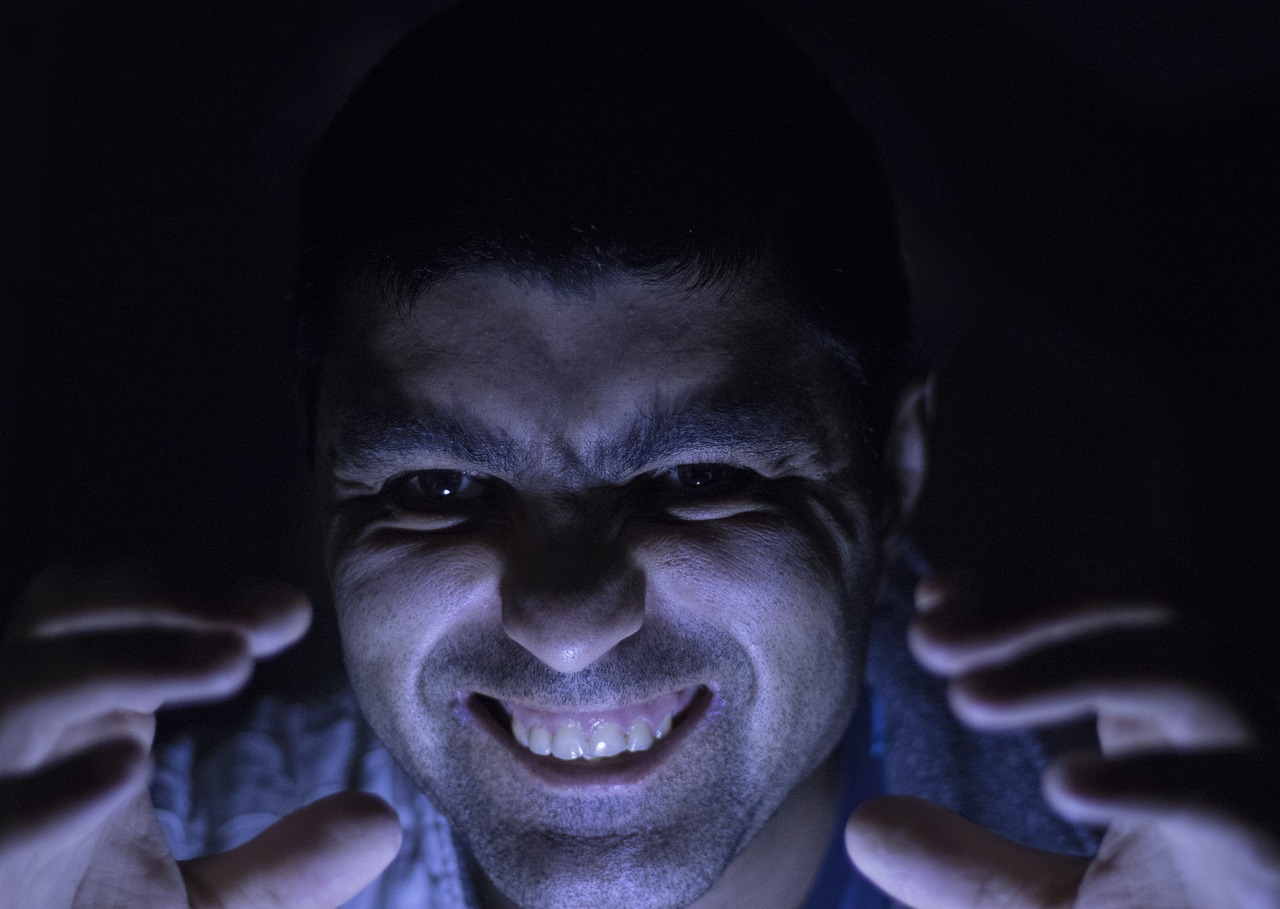
Caravaggio's Dramatic Lighting
When you think of dramatic lighting in art, the name Caravaggio often comes to mind. His revolutionary approach to chiaroscuro created an emotional intensity that captivated viewers and set a new standard for visual storytelling. Caravaggio wasn't just painting; he was crafting a visual narrative that drew the audience into the heart of the action, making them feel as if they were part of the scene. His use of stark contrasts between light and shadow not only highlighted the subjects but also added a layer of depth and realism that was unprecedented for his time.
One of the most striking aspects of Caravaggio's work is his ability to use light as a dramatic device. In paintings like The Calling of Saint Matthew, he employed a single light source that illuminated the figures in a way that seemed almost supernatural. This technique created a sense of immediacy, as if the viewer were witnessing the moment unfold in real-time. The shadows, in contrast, were not merely absent light; they were rich, deep, and full of texture, adding to the overall emotional weight of the piece. Caravaggio's mastery of this technique transformed ordinary scenes into extraordinary experiences.
To better understand how Caravaggio achieved such striking effects, we can break down his lighting techniques into a few key elements:
- Single Light Source: Caravaggio often used a single, strong light source to create dramatic contrasts. This technique emphasized the forms of his subjects and created a three-dimensional effect.
- Directional Lighting: He positioned his light source at angles that highlighted certain features while casting others into shadow, guiding the viewer's eye to focal points within the composition.
- Chiaroscuro Technique: By skillfully balancing light and shadow, Caravaggio was able to evoke emotions and convey narratives that resonated deeply with his audience.
In addition to these techniques, Caravaggio's choice of subjects played a significant role in his dramatic lighting. He often depicted scenes from the Bible or mythology, focusing on the human experience—joy, sorrow, redemption, and betrayal. The emotional weight of these themes was amplified by his lighting choices, allowing viewers to connect with the characters on a personal level. For example, in Judith Beheading Holofernes, the stark contrast between Judith's illuminated face and the dark background intensifies the horror and drama of the moment.
Caravaggio's influence on lighting in art cannot be overstated. His innovative techniques paved the way for future artists, inspiring generations to explore the emotional potential of light and shadow. Even today, his work remains a benchmark for artists who strive to create powerful visual narratives. Understanding his approach to dramatic lighting is essential for any artist looking to master the art of chiaroscuro.
Q: What is chiaroscuro?
A: Chiaroscuro is an art technique that uses strong contrasts between light and dark to create a sense of volume and depth in two-dimensional artworks.
Q: How did Caravaggio influence modern art?
A: Caravaggio's dramatic use of light and shadow has influenced countless artists and movements, emphasizing the emotional impact of visual storytelling.
Q: Can I learn chiaroscuro techniques?
A: Absolutely! Many artists practice chiaroscuro through sketching and painting exercises that focus on manipulating light and shadow.

Rembrandt's Subtle Gradations
When we think of chiaroscuro, one name that immediately springs to mind is Rembrandt van Rijn. This Dutch master had an extraordinary ability to manipulate light and shadow, creating a profound sense of depth in his paintings. Unlike his contemporaries who often employed stark contrasts to dramatize their subjects, Rembrandt preferred a more nuanced approach. His technique involved subtle gradations of light that enveloped his subjects, inviting the viewer into a world that felt both intimate and expansive.
In many of his portraits, you can see how Rembrandt used light not just to illuminate, but to tell a story. For instance, in his iconic painting, "The Night Watch," the figures emerge from the shadows, each one carefully highlighted to create a dynamic composition. This interplay of light and dark adds a layer of complexity, making the viewer feel as if they are witnessing a moment frozen in time. The soft transitions in light guide the eye across the canvas, emphasizing the emotions and interactions of the characters depicted.
Moreover, Rembrandt's mastery of skin tones is a testament to his understanding of chiaroscuro. He often painted his subjects with a warm palette, allowing for a naturalistic portrayal that feels alive. The way he blended shadows into the highlights of a face created a three-dimensional quality that is still revered today. Artists looking to emulate his style often study his use of earthy colors and the way he layered paint to achieve depth. This technique not only showcases his subjects' physical traits but also their emotional states, making them relatable and human.
To truly appreciate Rembrandt's subtle gradations, one should consider the following key aspects of his technique:
- Light Source: Rembrandt often used a single light source, which created dramatic shadows and highlights, enhancing the three-dimensionality of his subjects.
- Layering: He applied multiple layers of paint, allowing for a rich texture that contributed to the depth of color and light.
- Contrast: While his approach was more subtle, the contrast between light and shadow was still significant, lending a dramatic flair to his works.
In conclusion, Rembrandt's subtle gradations of light and shadow set him apart from his peers, allowing him to create works that resonate with viewers on a deeper emotional level. His technique is not just about visual appeal; it’s about capturing the essence of humanity and the complexity of life itself. Artists today can learn much from studying Rembrandt's approach, as it emphasizes the importance of light in conveying mood and narrative within a piece of art.
1. What is chiaroscuro?
Chiaroscuro is an artistic technique that uses strong contrasts between light and dark to give the illusion of volume in modeling three-dimensional objects and figures.
2. How did Rembrandt use chiaroscuro in his paintings?
Rembrandt employed subtle gradations of light and shadow to create depth and emotion in his portraits, often using a single light source to enhance the three-dimensionality of his subjects.
3. Why is Rembrandt considered a master of chiaroscuro?
His ability to blend light and shadow with such finesse, along with his innovative use of color and texture, allows his paintings to convey deep emotional narratives, setting him apart as a master of the technique.
4. Can modern artists use chiaroscuro?
Absolutely! Modern artists across various mediums, including painting, photography, and digital art, continue to adapt and apply chiaroscuro techniques to enhance their work.
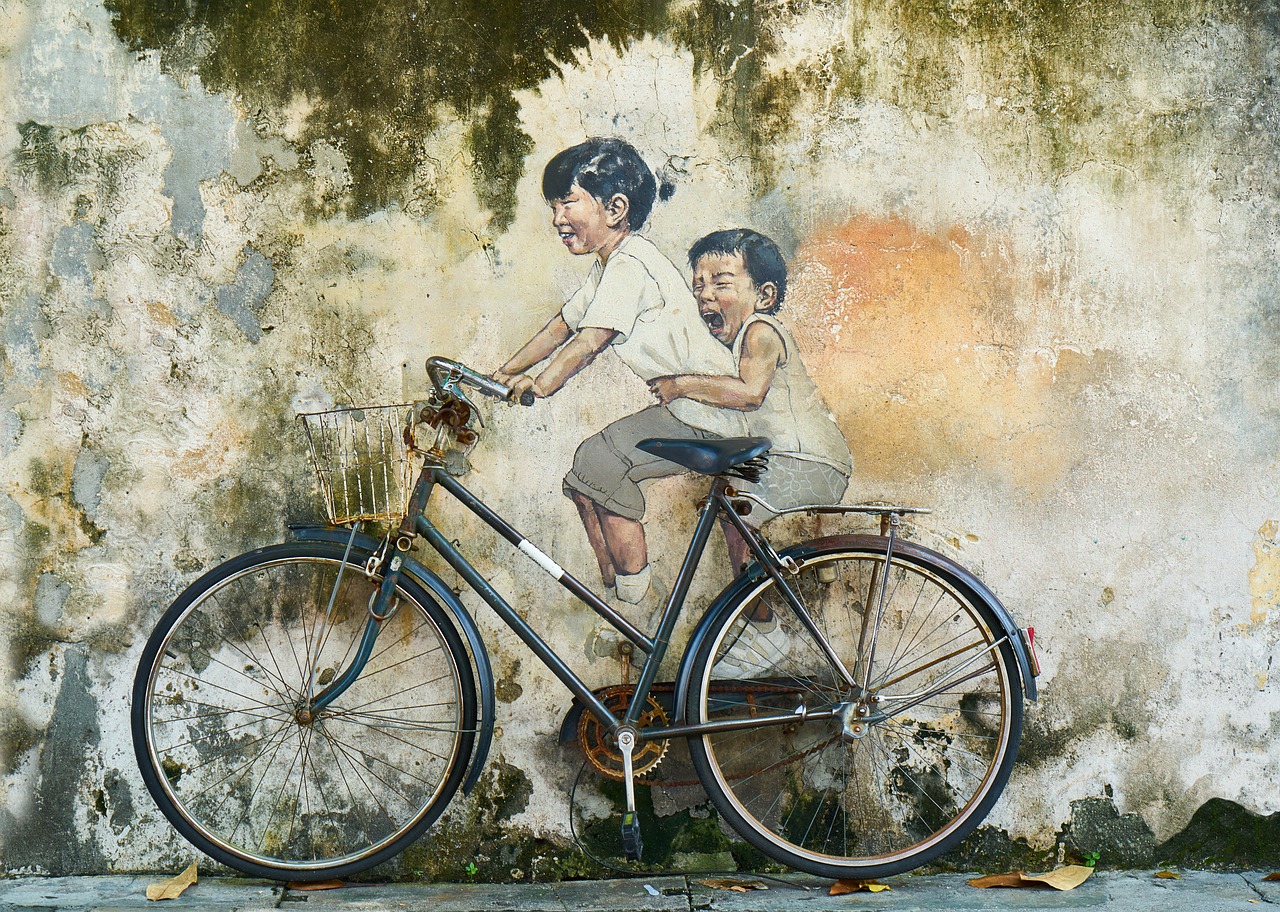
Modern Applications of Chiaroscuro
Chiaroscuro is not just a relic of the past; it has found its way into the hands of modern artists, photographers, and digital creators alike. In today’s art scene, the dramatic interplay of light and shadow continues to evoke emotion and depth, making it a vital technique for storytelling across various mediums. Whether you’re flipping through a contemporary art gallery or scrolling through stunning digital illustrations online, the influence of chiaroscuro is omnipresent.
In painting, artists have embraced chiaroscuro to create vibrant, dynamic compositions. For instance, many modern painters experiment with bold contrasts to convey mood and atmosphere, often using techniques reminiscent of the old masters. This application can be seen in works that utilize strong light sources to focus attention on specific elements, enhancing the narrative quality of the piece. The emotional weight that chiaroscuro can add is unparalleled; it invites viewers into a world where light and dark dance together, telling stories that words often cannot.
Photography, too, has seen a resurgence of chiaroscuro techniques. Photographers manipulate natural and artificial light to create striking contrasts in their images. For example, portrait photographers often use chiaroscuro to highlight facial features, creating a three-dimensional effect that draws viewers in. The play of shadows on the subject’s face can convey a range of emotions, from introspection to exuberance. This technique is particularly effective in black-and-white photography, where the absence of color forces the viewer to focus on the interplay of light and shadow.
Digital art has also embraced chiaroscuro, allowing for innovative applications that were previously impossible. Digital artists can manipulate light with precision, layering effects to create depth and dimension in their works. Programs like Adobe Photoshop and Procreate offer tools that enable artists to experiment with light sources and shadow placement, making it easier than ever to achieve that striking contrast that defines chiaroscuro. Moreover, the ability to undo and redo allows for a playful exploration of light and shadow, encouraging artists to push boundaries and refine their techniques.
As you can see, the applications of chiaroscuro are as diverse as the artists who use it. From traditional painting to modern photography and digital art, this technique remains a powerful tool for expression. The ability to create depth and evoke emotion through light and shadow is a timeless skill, and its relevance in contemporary art is a testament to its enduring allure.
- What is chiaroscuro? Chiaroscuro is an artistic technique that uses strong contrasts between light and dark to create a sense of volume and depth in two-dimensional works.
- Who were the key artists associated with chiaroscuro? Notable artists include Caravaggio and Rembrandt, both of whom used this technique to enhance the emotional impact of their works.
- How is chiaroscuro used in modern art? Modern artists use chiaroscuro in various forms, including painting, photography, and digital art, to create dramatic effects and enhance storytelling.
- Can I practice chiaroscuro techniques at home? Absolutely! You can practice chiaroscuro by sketching still life arrangements with strong light sources or by experimenting with photography using natural light.
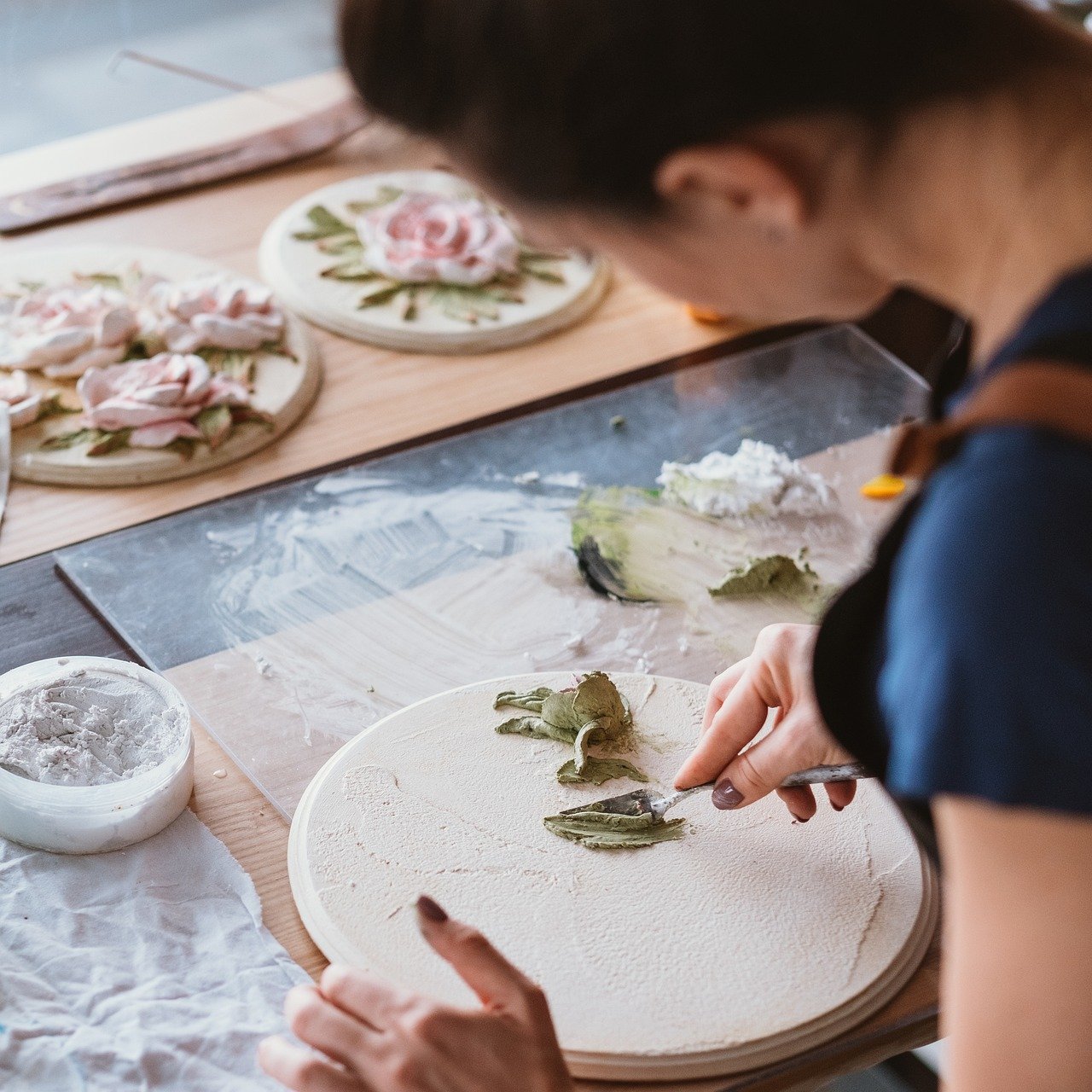
Techniques for Mastering Chiaroscuro
Mastering the art of chiaroscuro is not just about knowing how to use light and shadow; it’s about understanding the emotional and visual impact these elements can create. First off, let’s talk about lighting techniques. The way you manipulate light can completely transform your artwork. For instance, using a single light source can create dramatic shadows that emphasize certain features, while multiple light sources can soften contrasts and provide a more balanced look. Think of your light source as a spotlight, illuminating the areas you want to highlight while leaving other areas in shadow, creating a dynamic interplay that captivates the viewer.
Another effective method is to experiment with various lighting setups. You can try the following techniques to see what works best for your style:
- Side Lighting: This technique casts long shadows and emphasizes texture, making it perfect for dramatic portraits.
- Backlighting: This creates a halo effect, adding depth and intrigue, especially in landscape or still life compositions.
- Overhead Lighting: This mimics natural light and can create a soft, even illumination that is great for capturing subtle details.
Once you’ve experimented with lighting, the next step is to practice with sketches. Sketching is an essential exercise for grasping the nuances of chiaroscuro. By focusing on light and shadow, you can refine your ability to depict depth and dimension. Try setting up a simple still life with a single light source and sketch the scene. Pay attention to how light interacts with different surfaces and forms. You might find it helpful to use a charcoal pencil or graphite to easily manipulate the darkness and lightness of your strokes.
As you sketch, consider the following exercises to enhance your understanding of chiaroscuro:
- Choose a simple object and light it from different angles. Sketch the object each time to see how the shadows change.
- Draw a series of shapes (like spheres or cubes) with varying light intensities to practice creating depth.
- Attempt to recreate famous chiaroscuro artworks by focusing on how the artists used light and shadow.
Lastly, don’t forget the importance of color theory in chiaroscuro. While light and shadow are crucial, the colors you choose can significantly affect the overall mood of your artwork. Warm colors can evoke feelings of comfort and passion, while cool colors can create a sense of calm or melancholy. Experimenting with color alongside light and shadow can lead to stunning results that resonate with viewers on multiple levels.
In conclusion, mastering chiaroscuro requires a blend of technical skills and emotional intelligence. By focusing on effective lighting techniques, practicing through sketches, and understanding the interplay of color, you can create striking contrasts that not only enhance your artwork but also engage your audience deeply. So grab your sketchbook, set up a light source, and start exploring the fascinating world of chiaroscuro!
Q: What is chiaroscuro?
A: Chiaroscuro is an artistic technique that uses strong contrasts between light and dark to create a sense of volume and depth in two-dimensional works.
Q: Which artists are known for their use of chiaroscuro?
A: Notable artists include Caravaggio, Rembrandt, and Leonardo da Vinci, each of whom brought their unique interpretations to the technique.
Q: How can I practice chiaroscuro?
A: Start by sketching objects under different lighting conditions, focusing on how shadows and highlights interact. Experimenting with various light sources will also help you understand the technique better.
Q: Does color play a role in chiaroscuro?
A: Yes, color can influence the emotional tone of your work. Combining color theory with chiaroscuro can enhance the overall impact of your art.
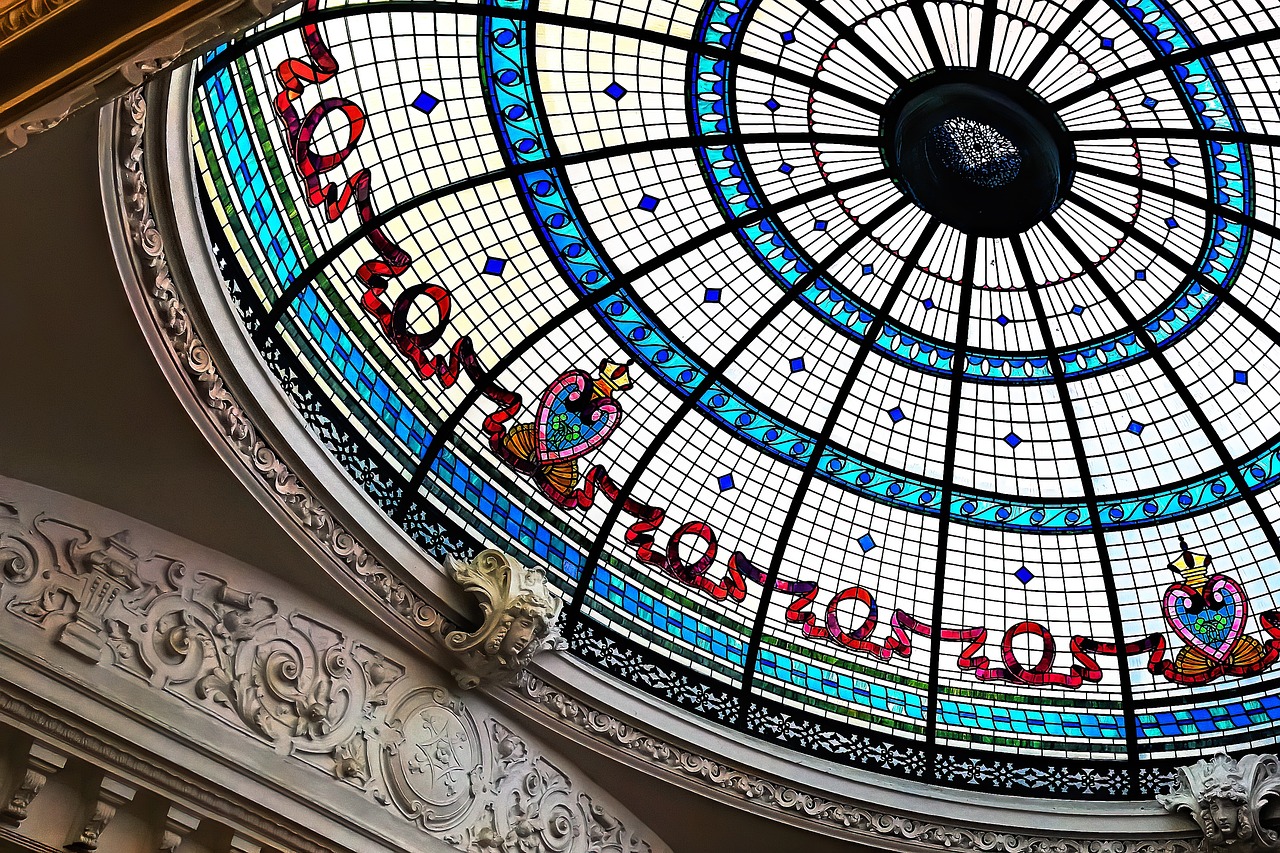
Lighting Techniques
When it comes to mastering chiaroscuro, understanding the intricacies of lighting techniques is paramount. The way light interacts with subjects can dramatically alter the mood and depth of your artwork. Think of light as the brush that paints the story of your piece, guiding the viewer's eye and evoking emotion. So, how do you harness this powerful tool?
First off, consider the direction of your light source. Light can come from various angles, and each angle will cast different shadows and highlights. For instance, a light source positioned directly in front of the subject will create flat lighting, which lacks the depth that chiaroscuro is famous for. In contrast, lighting from the side can create striking shadows that enhance the three-dimensionality of the subject. This technique can be likened to sculpting with light—by shaping how light falls, you are essentially molding your subject into a more dynamic form.
Another crucial aspect is the quality of light. Hard light creates sharp, defined shadows, while soft light produces gentle transitions. To illustrate, let’s break it down:
| Quality of Light | Description | Effect on Chiaroscuro |
|---|---|---|
| Hard Light | Direct and intense, often from a small source | Creates strong contrasts and dramatic shadows |
| Soft Light | Diffused and gentle, often from a larger source | Produces subtle gradients and a more natural look |
To truly master chiaroscuro, you should experiment with both types of lighting. For example, try setting up a still life with a single light source at different distances from your subject. Notice how the shadows shift and the overall mood changes. This experimentation is crucial for developing an intuitive understanding of how light behaves.
Additionally, using multiple light sources can add complexity to your work. For instance, a key light can serve as the main source, while fill lights can soften shadows and reduce contrast. This layered approach can create a more nuanced atmosphere, allowing you to play with the delicate balance of light and shadow. Just remember, too much fill light can wash out the drama you’re striving to achieve!
As you delve deeper into lighting techniques, don’t forget about color temperature. The warmth or coolness of your light can significantly affect the perception of your artwork. A warm light can evoke feelings of comfort and intimacy, while cooler tones can create a sense of distance or melancholy. By adjusting the color temperature, you can enhance the emotional impact of your chiaroscuro compositions.
Finally, always keep in mind the importance of practice. Set up your own lighting scenarios and sketch from life. Observe how the light interacts with different textures and surfaces, and how it can transform an ordinary scene into something extraordinary. The more you practice, the more confident you’ll become in your ability to manipulate light and shadow to create stunning contrasts.
- What is the best light source for practicing chiaroscuro? Natural light is often the best for beginners, as it provides a range of qualities and directions. However, using artificial lights can also yield excellent results.
- How can I create dramatic shadows in my artwork? Position your light source at an angle to your subject, and consider using a hard light to enhance the sharpness of the shadows.
- Is it necessary to use multiple light sources? While it's not necessary, using multiple light sources can add depth and complexity to your work. Experiment to see what works best for your style!
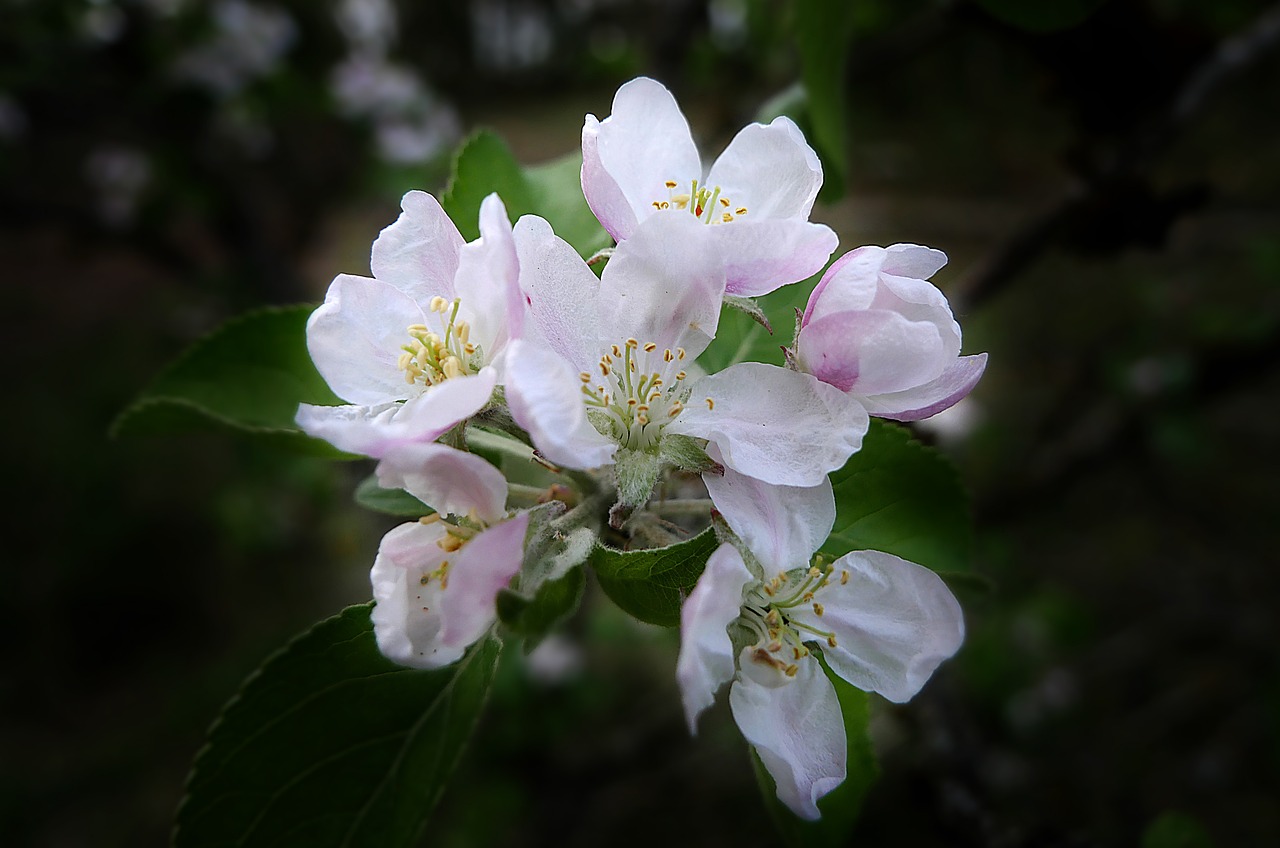
Practicing with Sketches
When it comes to mastering the art of chiaroscuro, practicing with sketches is an essential step that can’t be overlooked. Sketching allows artists to explore the interplay of light and shadow without the pressure of creating a finished piece. It’s like warming up before a big game; you want to get your muscles moving and your mind engaged. By focusing on quick sketches, you can experiment with different lighting conditions and observe how they affect the overall composition.
Start by selecting a simple object or scene, perhaps a fruit or a still life arrangement. Set it up in a well-lit area where shadows can be easily observed. As you sketch, pay close attention to how light interacts with the surfaces of your subject. Notice the way light creates highlights, mid-tones, and deep shadows. This is your opportunity to train your eye to see the subtle variations that make up a three-dimensional form.
To enhance your practice, consider using a range of drawing materials such as charcoal, graphite, or even ink. Each medium has its own unique properties that can help you convey different textures and depths. For instance, charcoal can create rich, dark shadows that are perfect for dramatic effects, while graphite allows for finer details and smoother gradations. Experimenting with various tools will not only improve your skills but also help you discover your personal style.
Here are a few exercises to incorporate into your sketching practice:
- Light Source Experimentation: Change the angle of your light source and sketch the same object multiple times. Observe how the shadows shift and how the overall mood of the sketch changes.
- Value Studies: Create a series of sketches focusing solely on the values (lightness and darkness) rather than details. This will help you understand how to balance light and shadow effectively.
- Timed Sketches: Set a timer for 5-10 minutes and create quick sketches. This will encourage you to capture the essence of light and shadow without getting bogged down in details.
As you progress, don’t forget to reflect on your sketches. Take a moment to analyze what worked well and what didn’t. This self-critique is crucial for growth as an artist. Consider keeping a sketchbook dedicated to your chiaroscuro studies, allowing you to track your progress over time and revisit your earlier works with a fresh perspective.
Incorporating these sketching practices into your routine will not only enhance your understanding of chiaroscuro but also build your confidence in using this powerful technique. Remember, every great artist started somewhere, and your sketches are a stepping stone on your journey to mastering the dramatic contrasts of light and shadow.
Q: What is the best medium for practicing chiaroscuro?
A: While charcoal is often favored for its ability to create deep shadows, any medium can be used effectively. Graphite, ink, and even pastels can help you explore different aspects of light and shadow.
Q: How can I improve my understanding of light and shadow?
A: Regular sketching from life is key. Observe how light interacts with objects in your environment and practice capturing that in your sketches.
Q: Is it necessary to use a reference photo for practicing chiaroscuro?
A: While working from reference photos can be helpful, drawing from life provides a more dynamic understanding of light and shadow. Aim to incorporate both methods into your practice.
Frequently Asked Questions
- What is chiaroscuro?
Chiaroscuro is a technique in art that uses strong contrasts between light and dark to create a sense of volume and depth in two-dimensional works. It helps to enhance the dramatic effect of an image, making it visually striking and emotionally engaging.
- Who are the most famous artists associated with chiaroscuro?
Some of the most notable artists known for their mastery of chiaroscuro include Caravaggio and Rembrandt. Caravaggio is celebrated for his dramatic use of light and shadow, while Rembrandt is recognized for his subtle gradations that add complexity to his subjects.
- How can I practice chiaroscuro in my artwork?
To practice chiaroscuro, start by sketching simple shapes and gradually introduce light and shadow. Use a single light source to observe how it affects the forms. Experiment with different lighting setups and take time to analyze how shadows fall and interact with the light.
- What role does lighting play in chiaroscuro?
Lighting is crucial in chiaroscuro as it defines the contrasts that create depth. By manipulating light sources—whether natural or artificial—artists can achieve various effects that enhance the mood and dimensionality of their work.
- Can chiaroscuro be used in modern art forms?
Absolutely! Chiaroscuro is not limited to traditional painting. It has been adapted in photography, digital art, and even film, where lighting techniques are employed to evoke emotions and create visual narratives.
- What are some tips for beginners wanting to master chiaroscuro?
Begin by studying the works of masters like Caravaggio and Rembrandt to understand their techniques. Practice sketching with a focus on light and shadow, and experiment with different lighting conditions. Don't hesitate to make mistakes; they are part of the learning process!



















